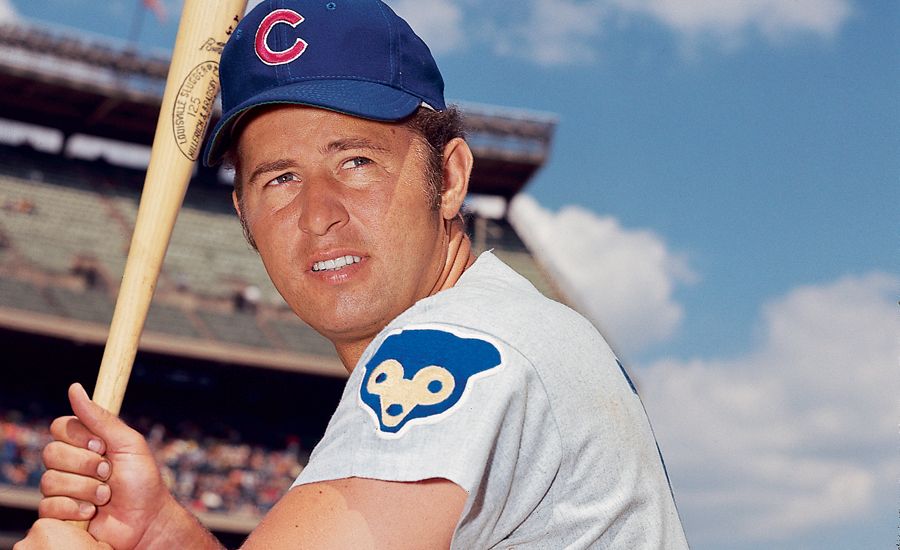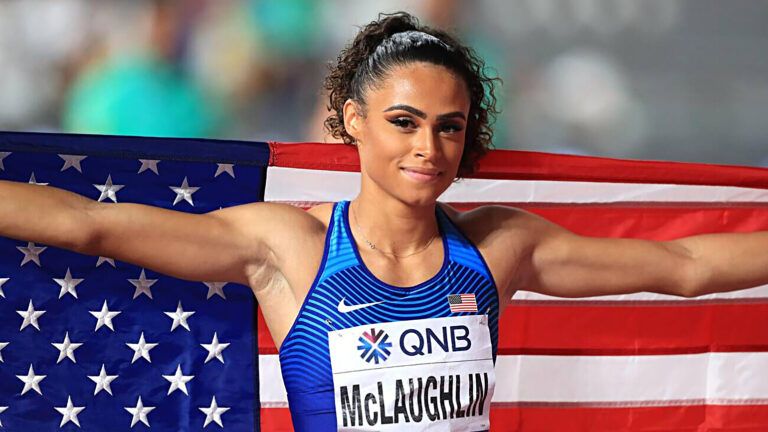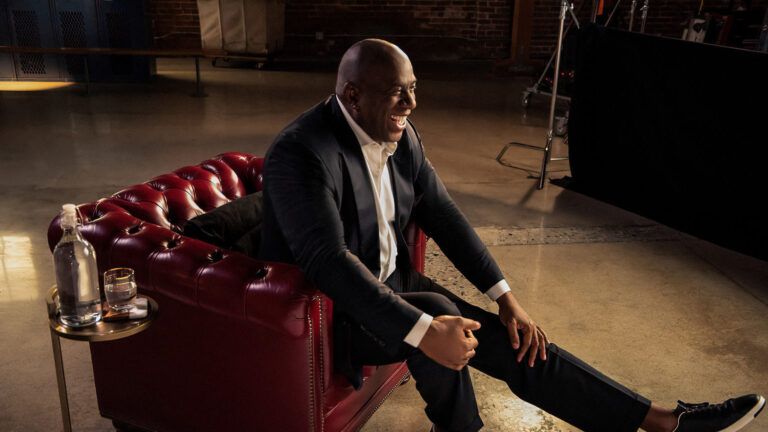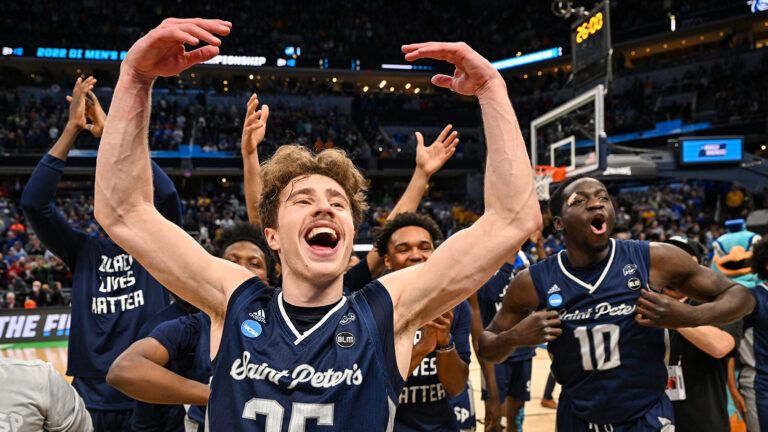I was kneeling in the on-deck circle at Chicago’s Wrigley Field that sweltering August afternoon. It was the bottom of the ninth. The Cubs trailed the Los Angeles Dodgers, 2-0, but we had a pair of runners on base and slugger Billy Williams at the plate.
It was the kind of situation Billy loved, and he was determined to come through. In the stands, 20,000 fans screamed for a hit. Me, I was silently praying that he would make an out so I wouldn’t have to bat.
Anyone who ever watched me play for the Cubs back in the 1960s and early ’70s will find that last statement hard to believe. No one loved pressure situations more than I.
But that day things were different. I have type 1 diabetes—juvenile diabetes—and as I watched Williams battle the pitcher, I suddenly felt myself grow woozy. I looked up and saw three scoreboards. My blood-sugar level had dropped fast. I glanced into the dugout.
Should I tell manager Leo Durocher that I needed to come out, that I needed something with sugar to eat, that I didn’t think I could hit? Williams drew a walk and those 20,000 screams grew even louder. I had to go up to the plate.
Back then, in 1967, I was probably the only diabetic athlete in professional sports. I signed a pro contract in 1959, at age 18. My doctor wasn’t even sure I’d make it through the first minor league season. But I was determined to play in the big leagues. I wasn’t going to let this thing beat me.
Growing up in Seattle, I had been the picture of health. By the time I graduated from high school I was considered the best baseball prospect in the state.
There were 16 big league clubs then, and every one of them offered me at least $50,000 to play ball for their minor league team as a third baseman—big money in those days. Every team, that is, except the Cubs. They offered me $20,000 and the promise of a quick promotion to the majors. They knew just how to hook me.
I faced one last hurdle before beginning my pro career: a routine physical. The exam was cursory; the doctor didn’t even draw blood. I got a clean bill of health and an assignment to the Cubs’ minor league club in San Antonio, two levels from the big leagues.
Shortly before I left home, though, my mother sent me to our family doctor for a checkup. Dr. Tupper always had a big smile for me. But when he came back with the results from my urine sample, his smile was gone. “Ron, we found some sugar in your urine,” he said. “You may have diabetes.”
Diabetes? I didn’t even know what that was. I had just one concern: “Can I still play baseball?”
“I don’t know,” he answered.
I headed straight to the library. What I read was frightening. Diabetes could lead to blindness, hardening of the arteries and kidney failure, among other things. One book even said, “The average life expectancy, from the time of diagnosis, is twenty-five years.” Does that mean I’m supposed to die when I’m forty-three?
I couldn’t accept that a disease would stop me from using my God-given gifts. Reporting to San Antonio in 1959, I felt great. To look at me you’d never guess I was sick. I didn’t even have to take insulin yet. With exercise and proper diet, I figured I’d be able to keep my diabetes under control.
I did. I hit .327 with 11 home runs and was considered one of the stars of the league. Between innings, I’d eat a Snickers bar or drink some orange juice if I felt my blood-sugar level dipping.
Snacking in the dugout was common, so no one on the team suspected a thing. And I wasn’t going to let any of them know. I wanted my teammates and fans to think of me as a ballplayer—not as someone who needed their sympathy.
That winter, though, my pancreas pretty much stopped functioning, and I had to start taking daily insulin injections. This too I kept from the Cubs—even after they called me up to the majors in June 1960.
Every player had a roommate for out-of-town games, so I had to slip into the bathroom early each morning and secretly take my insulin injection. I feared that if the Cubs found out and I slumped badly, they would attribute it to the diabetes and send me back to the minors—or worse, release me.
I already felt isolated enough. Some of the veteran players wouldn’t talk to me because I was a rookie, and they figured I had stolen the third base job from one of their buddies.
To add to that, I worried about what could happen to me. In 1960 there were no high-tech gadgets like a glucometer for measuring blood sugar. You had to go largely by feel. If I slipped into a diabetic coma, who would know what to do?
The following season my anxiety increased. My new roommate was a catcher named Cuno Barragan. Cuno was a great guy, impossible not to like, and we quickly became friends—we’d go to dinner, see a movie or just hang out and talk. He began to confide in me. And, oh, how I wanted to confide in him.
A few days before the start of the regular season the pressure became too much. I sat Cuno down and told him about my condition, swearing him to secrecy. “Don’t worry,” he said. “You can count on me.”
He became another set of eyes for me. Sometimes coming off the field between innings, he’d say, “Roomie, you look a little pale. Better grab a Snickers.” At least I no longer had to hide my insulin and syringes from him.
For three seasons he was the only Cub who knew. Then in 1963 I made the National League All-Star team and was named Cubs team captain. The time had come to let my teammates in on my secret.
First I explained things to Cubs General Manager John Holland, and then I called a hasty pregame meeting. The players lounged in front of their cubicles on folding chairs, not knowing what to expect, while I stood in the center of the room. “This has nothing to do with the game,” I said, unable to mask my feelings.
Over the next 20 minutes I explained my illness. I gave them details—how I got dizzy on the field sometimes and had to rush to the dugout between innings for candy or juice. I talked about blood samples, urine tests, insulin injections and diet adjustments.
What I didn’t tell them was what I read about diabetes on that long-ago day when I was 18: that one day I could go blind; or suffer kidney failure, hardening of the arteries, or gangrene. Or become one of the many thousands who lose limbs each year to diabetes.
“But I don’t want this to go outside this room,” I said. “I expect you to judge me by what I do on the field. I just don’t want to hide anymore.”
There was a long moment of silence. Then someone shouted, “That’s okay, Captain. Let’s play ball.” And the guys and I took the field.
Not until 1971 did the public learn about my disease. The team had decided to honor me with a special Ron Santo Day, and I suggested to Mr. Holland that any donations in my name be made to the Juvenile Diabetes Foundation. I felt proud, he felt pleased. “Think of how many diabetics you can help,” he said. “When they realize what you’ve been able to accomplish, it will inspire them to live life as fully as you have.”
My life changed that day. I started spending more time in hospital pediatric units, visiting diabetic children. I urged them to remain positive and told them that they could accomplish anything they wanted despite their disease. Kids sent me letters; so did their parents.
It’s funny. I always thought I’d make my biggest mark as a ballplayer, but it was after I started speaking up about diabetes that I really made a difference.
Since 1976 I have been on the board of the Juvenile Diabetes Research Foundation, and I’ve been told that the annual walks for diabetes we sponsor in Chicago have raised more than $24 million dollars for research.
My own health stayed good until I turned 60, in 2000. Then, inevitably, the disease caught up with me. In the last three years I’ve had 15 operations. In 2001, circulatory problems necessitated the amputation of my right leg below the knee.
Shortly before last Christmas, I lost my left leg as well. I was fitted with state-of-the-art vacuum-seal prostheses that fit so well and so painlessly that my legs feel as if they’re my own.
I’m doing the things I love: working for the Cubs as a radio analyst, being with my family, riding my horse and speaking to groups about diabetes.
I tell them about my career and what incredible support I got when I shared my secret. I remind people that there’s no reason the disease should prevent them from utilizing their own God-given gifts. That’s why he gave them to us.
And then I tell them about that sweltering summer day in 1967, when I stepped to the plate in the bottom of the ninth with the bases loaded and Cubs trailing, 2-0, and my head spinning because my blood sugar level had suddenly tumbled.
On the mound was Bill Singer, a two-time All-Star with a wicked curveball. My problem was this: I saw three Bill Singers, one on top of the other. His first pitch came at me looking like it was attached to a Slinky. What did I do? I had no choice: I swung.
The ball soared higher, higher, out of the park—one of six grand slams I hit in my career. Now that’s what I’d call a God-given gift.





